Have you ever encountered a tomato with green seeds and wondered what that meant? While it can be confusing to figure out, tomatoes come in a variety of colors and textures — but there is more than meets the eye when it comes to their seed color! In this post, we’ll look at why tomatoes have green seeds, what it means for the freshness of the tomato, and how best to handle them. We’ll also provide tips from workflow background information on how to determine the freshness of tomatoes no matter what their seed color looks like. So if you’ve been cautious about buying large quantities of or consuming questionable-looking veggies lately due to confusion over green seeds, read on — because with this blog post your worries are about to get tossed out!
What Is the Best Way to Plant Tomatoes?
The best way to plant tomatoes is to start with healthy seedlings. Start by choosing an area in your garden that gets plenty of sunlight and has well-draining soil.
Firmly press down the soil around the base of the plants so they won’t fall over when exposed to heavy winds and rains.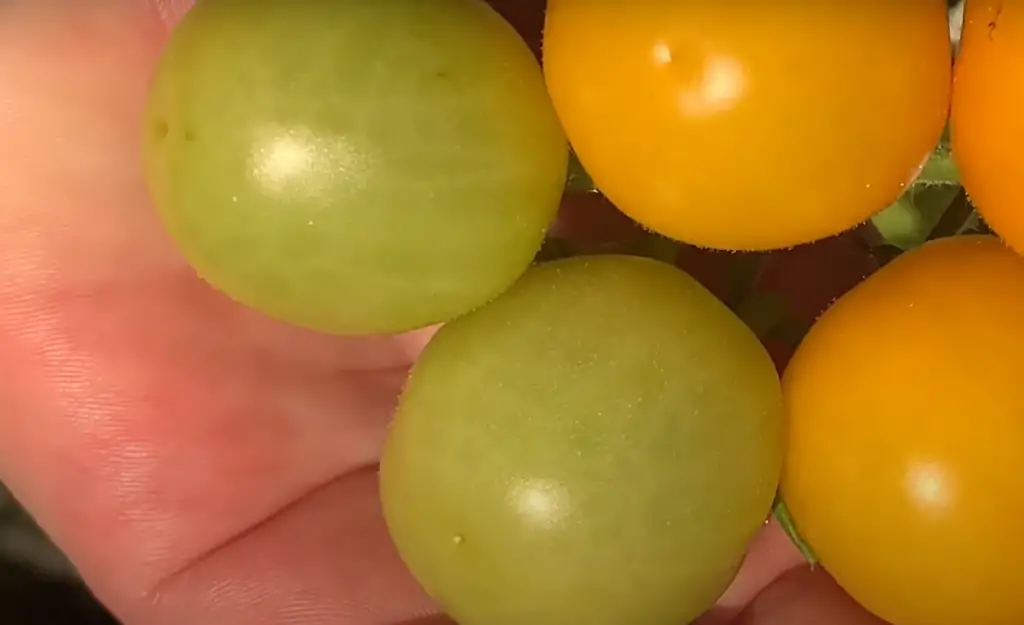
Keep the soil consistently moist but not soggy throughout the growing season, as this will help produce more fruits. Make sure you use stakes or cages to support your tomato plants if needed. Prune off any dead leaves or branches at least once a month, and pick off any bugs that may be present. Lastly, water your plants in the morning so that they have plenty of time to dry out during the day and reduce the risk of disease. By following these steps, you will be well on your way to a successful tomato harvest.[1]
How to Choose Tomato Seeds Correctly?
Choosing the right tomato seeds for your garden can be a daunting task. Here are some tips to help you choose the best tomato seeds for your gardening needs:
- Consider Your Climate: Different types of tomatoes have different climate requirements, so it is important to choose varieties that will do well in your local area or region. Take into account temperature, rainfall, soil type and other environmental factors when selecting tomato seeds.
- Pick Heirloom Varieties: Heirloom tomatoes have been passed down through generations and are known for their superior flavor and quality. While heirloom varieties may cost more than hybrids, they are worth the extra investment as they provide higher yields and more variety in colors and flavors.
- Research Disease Resistance: Make sure to look for tomato varieties that are resistant to common diseases such as blight and mosaic virus. Diseases can quickly spread and decimate a garden, so it is important to choose tomatoes with strong disease resistance. [2]
- Consider Determinate vs Indeterminate: Determinate varieties produce all their fruit in one concentrated harvest period, while indeterminates produce fruits over an extended period of time. Consider which type of growth pattern would best suit your needs and select the appropriate variety.
- Know Your Maturity Date: Different tomato varieties mature at different times, so it is important to know when you need your tomatoes to be ready for harvesting or preserving before selecting seeds. Look for the days-to-maturity information on the seed packet to make sure you are choosing a variety that will be ready when you need it. [3]
Why Are Tomato Seeds Green and What Does It Mean?
Tomato seeds are green because they contain a pigment called chlorophyll. Chlorophyll helps the tomato absorb more sunlight, which it needs to produce energy and fuel its growth. The green color of the seed also serves as a protective barrier from potential predators or environmental threats. Green tomatoes may look unappetizing, but don’t let their appearance fool you: these tiny treasures hold the key to a delicious bounty!
The best way to harness the power of the tomato is by planting and growing them yourself. It’s easy to do. Simply find some organic heirloom or hybrid tomato seeds, place them in nutrient-rich soil, and water regularly. With enough patience and effort, you’ll soon be rewarded with lush, juicy tomatoes that are bursting with flavor!
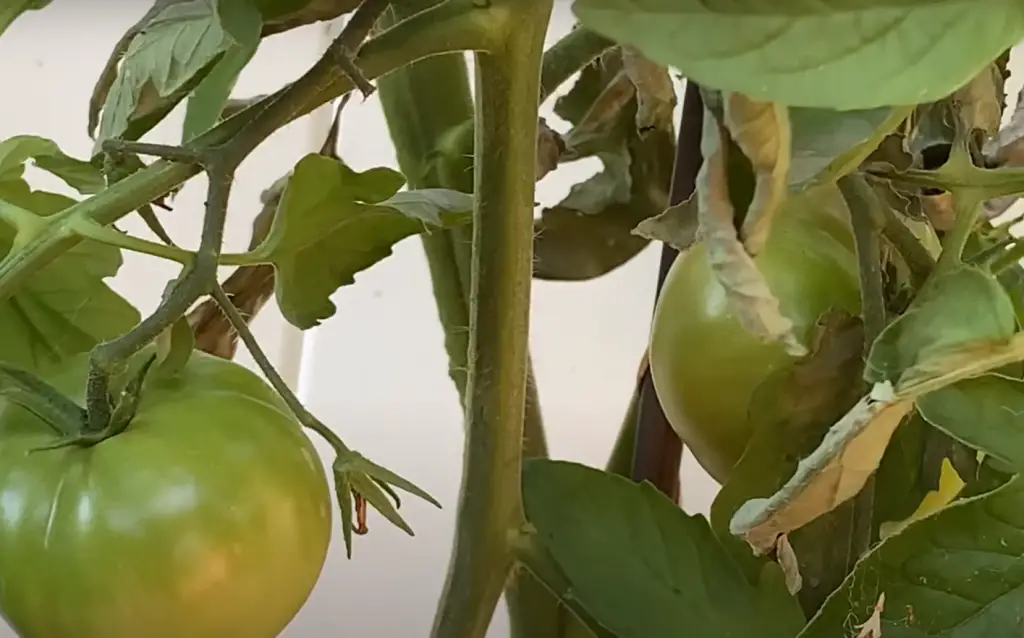
Whether you’re growing a few tomatoes for your own cooking needs or an entire garden full of fruits and vegetables, planting tomato seeds is a great way to get started. And because the seeds are already green, you’ll know right away that they have all the potential to produce something special. [4]
When To Pick Tomatoes: Several Strategies
The amount of time it takes for tomatoes to ripen and be ready for picking depends on the variety, growing conditions and weather. Here are several strategies you can use to determine when to pick your tomatoes:
Monitor Color Changes
As tomatoes mature, they typically start with a green hue, turning shades of yellow or orange as they ripen. Keep an eye out for color changes in order to harvest your tomatoes at peak flavor. Generally speaking, cherry and currant varieties turn red first while larger varieties may remain yellow or orange even after fully ripe.
Feel Test
Tomatoes should feel firm but not hard when fully ripe; their skin should be slightly soft yet still intact enough that it doesn’t split or tear. If the tomato is still hard, wait a few days before picking it.
Check The Bottom
As tomatoes ripen, they turn from green to yellow or orange at their stem and bottom end first. So, when in doubt, pick up your tomato and check the bottom for a change in hue – if you see one, then it’s time to harvest!
Give It A Sniff
When ready to be picked, ripe tomatoes will have that unmistakable sweet aroma. So go ahead and give them a sniff – that could be another cue for when to pick your tomatoes! [5]
How Weather Can Impact When To Pick Tomatoes?
Tomatoes are a popular crop for gardeners and farmers alike. They’re easy to grow, produce large yields, and are very versatile in the kitchen. But when you should pick a tomato can be tricky depending on the weather conditions.
- Temperature: Cold temperatures can cause tomatoes to split or crack if they are picked too soon after a cold front passes through an area. Tomatoes should not be picked until nighttime temperatures have been above 55 degrees
- Fahrenheit (12 Celsius) for several days at least. In addition, hot summer temperatures can cause tomatoes to ripen too quickly before they are ready for harvest. Try to wait until temperatures cool off in the evening hours before picking tomatoes during this time of year.
- Rainfall: Heavy rain storms can cause tomatoes to become waterlogged. This can lead to splitting and cracking of the tomato skin, as well as decreased flavor and shelf life. If a heavy rain is expected, it’s best to wait until after the storm has passed before picking any tomatoes.
- Sun: Tomatoes need at least 6-8 hours of direct sun per day in order to ripen properly. Too much direct sunlight can cause them to become overly ripe too quickly though, leading to lower quality fruit. On days with very hot temperatures, try to pick tomatoes early in the morning or late afternoon when the sun isn’t as strong. [6]
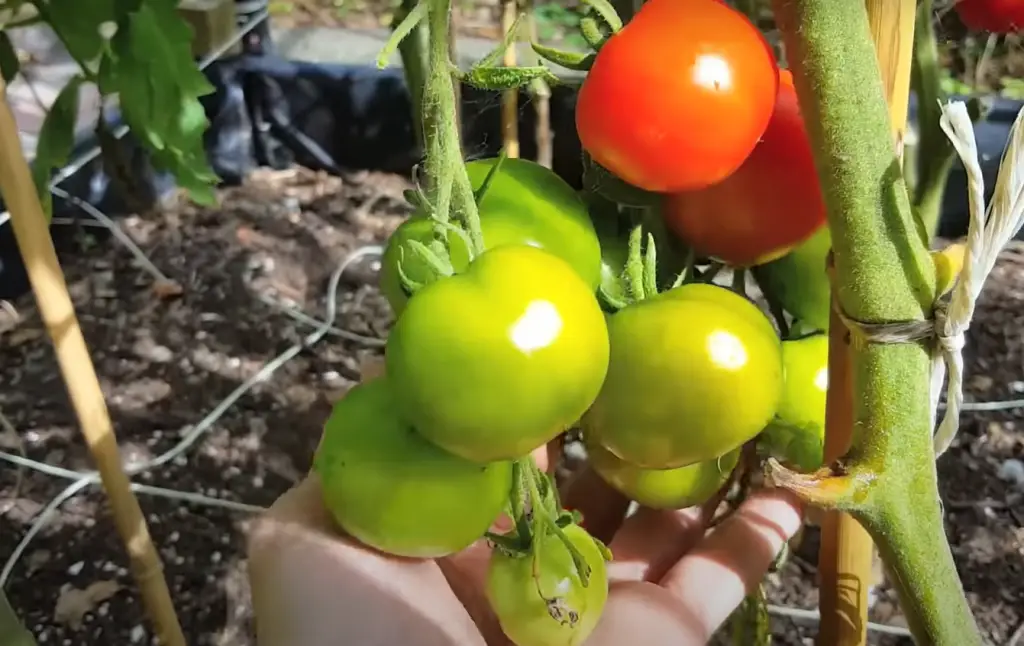
By taking weather conditions into consideration when deciding when to pick tomatoes, you can ensure that you are harvesting the best quality fruit possible. With a little extra patience and some attention to detail, you can enjoy delicious tomatoes all season long.
Harvesting Unripe Tomatoes
Harvesting unripe tomatoes can be done by:
- Hand Harvesting: It’s important to be gentle and patient. Wear gloves to protect your hands when handling the fruit. Use a pair of sharp scissors or pruning shears to snip off the stems of each tomato, being careful not to damage the stem. Place the harvested tomatoes in shallow baskets or trays and store them in a cool, dark place until they ripen.
- Harvesting with a Tomato Harvester: It is a hand-held tool that can make harvesting unripe tomatoes much easier. The harvester has two sets of blades that rotate as you push it along the row of plants; one set cuts the stems and drops the tomatoes into a collection tray. When you’ve finished harvesting one row, simply empty the tray and begin again. Make sure to wear gloves when using the harvester, as it can cause bruising to your hands if used too vigorously. [7]
After harvesting unripe tomatoes, store them in a cool place until they ripen or use them for green tomato recipes like chutney or salsa.
How Often To Pick Tomatoes?
Tomatoes need to be picked frequently during the growing season. Depending on the variety and climate, it can be necessary to pick tomatoes every few days or even daily. To ensure that they are ripe and at their peak flavor, look for tomatoes that are deep red, slightly soft, and have a slight sheen.
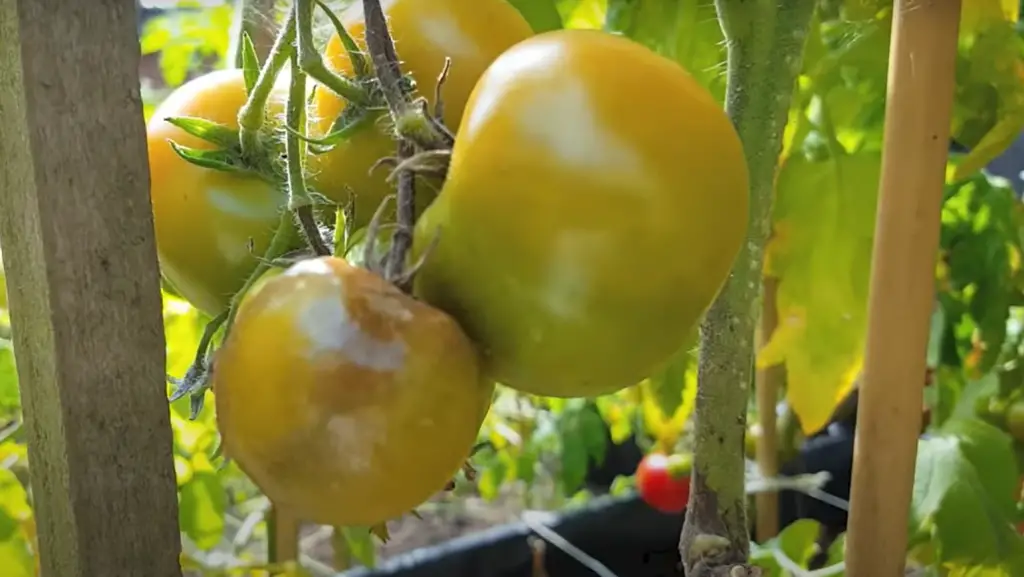
It is essential to pick tomatoes when they are ripe as unripe fruit will not ripen once picked from the vine. Tomatoes that stay on the vine too long will become over-ripe and will not have the best flavor.
Can Tomatoes be Fertilized and How to Do It?
Fertilizing tomatoes is an important step in growing healthy and productive plants. Tomatoes require nutrients such as nitrogen, phosphorus and potassium to grow well, and they may also need trace elements like magnesium or iron for optimum health. Fertilizing tomatoes the right way will help them reach their full potential.
There are several methods of fertilizing tomatoes, including organic or chemical options. Organic fertilizers can be applied directly to the soil and include compost, manure or other natural additives. Chemical fertilizers are often sold in pre-mixed formulations containing all the necessary nutrients needed to promote plant growth. All fertilizers should be applied according to package directions since too much fertilizer can cause excessive leaf growth with limited fruit production.
This helps prevent burning of the leaves from contact with high concentrations of chemicals and keeps it away from pets or children who may come in contact with it. It is also important to make sure tomatoes are well-watered before adding fertilizer so that nutrients can be absorbed quickly into the soil.Fertilizing tomatoes every couple of weeks during their growing season will encourage more flower production and swelling fruit size for a larger harvest. Additionally, adding compost or another natural source of nitrogen will help replenish depleted soil over time, ensuring healthy growth season after season. [9]
How To Determine The Tomato Ripeness?
Determining the ripeness of tomatoes is not as difficult as it may seem.

There are a few simple tips and tricks to help you determine when your tomatoes are ripe and ready for harvest.
- Look at the color: The best way to tell if a tomato is ripe is by looking at its color. Fully-ripe tomatoes should be a deep red hue, while those that are not yet ripe may still have some green patches or stripes on them.
- Feel the texture: You can also check the texture of your tomatoes to see if they’re ready for harvest; ripe tomatoes will feel firm but not hard when pressed lightly with your fingers. If they feel too soft then they are probably overripe.
- Smell the aroma: Ripe tomatoes have a strong, sweet, and somewhat fruity aroma. If your tomatoes don’t smell like anything, they might not be quite ripe yet. [10]
FAQs
What color should the seeds of a tomato be?
The seeds of a tomato should be a yellowish-brown color. If they are significantly darker than this or have any unusual coloring, it may indicate an infection or other issue with the plant that requires attention. Additionally, if the seeds appear shriveled or dried up, it could mean that the tomato is past its prime and not suitable for eating.
What happens if your tomatoes are green?
If your tomatoes are green, they may not be ripe yet. To ripen tomatoes, place them in a paper bag with an apple or banana (both produce ethylene gas which helps to ripen the tomatoes) and store at room temperature. Check daily for ripeness. Once your tomatoes have achieved desired ripeness, you can refrigerate them until ready to use. If left on the vine too long, some tomato varieties will begin to develop cracks in the skin. These can still be used safely but should be eaten soon after picking. Additionally, if you find that your tomatoes are still green but there is no longer time to wait for them to naturally mature on the vine, you can try blanching them in boiling water or using a green tomato recipe. Either of these methods will help to make your tomatoes usable in recipes before they reach full ripeness. If you are looking for more ways to preserve green tomatoes, you can try pickling or canning them. Pickling preserves the flavor and texture of the tomato, while canning is a great way to store them so they are ready when needed. Keep in mind that both methods require additional preparation and time.
Is it OK if tomato seeds are dark?
If your tomatoes are green, they may not be ripe yet. To ripen tomatoes, place them in a paper bag with an apple or banana (both produce ethylene gas which helps to ripen the tomatoes) and store at room temperature. Check daily for ripeness. Once your tomatoes have achieved desired ripeness, you can refrigerate them until ready to use. If left on the vine too long, some tomato varieties will begin to develop cracks in the skin.
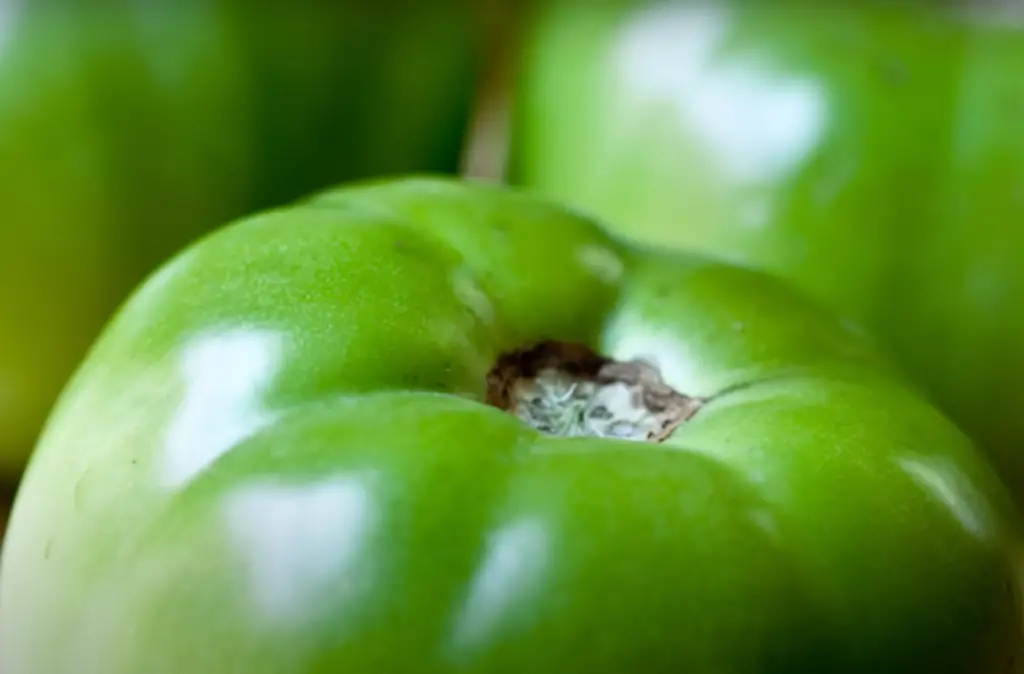
These can still be used safely but should be eaten soon after picking. Additionally, if you find that your tomatoes are still green but there is no longer time to wait for them to naturally mature on the vine, you can try blanching them in boiling water or using a green tomato recipe. Either of these methods will help to make your tomatoes usable in recipes before they reach full ripeness. If you are looking for more ways to preserve green tomatoes, you can try pickling or canning them. Pickling preserves the flavor and texture of the tomato, while canning is a great way to store them so they are ready when needed. Keep in mind that both methods require additional preparation and time.
How can you tell if tomato seeds are good?
Tomato seeds are generally considered good if they are still completely covered by the gel-like coating that surrounds them. This coating helps protect the seed from fungal diseases and other contaminants, so a healthy-looking coating can be an indication of viable tomato seeds. If the gel has dried out or turned dark, it may indicate that the seed is no longer viable and should not be used for planting. Additionally, you should inspect the individual tomato seeds for signs of damage such as bruising or cracking which could also indicate a poor germination rate.
Useful Video: Will Seeds From Green Tomatoes Grow?
Conclusion
After considering the different options for tomato seed selection, tomato care and proper cultivation of tomatoes, you are now ready to embark on your journey of growing delicious tomatoes. Whether you choose to grow in a pot or in the soil, remember that your success will be based on what type of seeds you plant, how long you water them, and what nutrients they are lacking. When done with the right steps and procedures, your harvest will be abundant with luscious tomatoes that can rival even those from local grocery stores – all while saving money. All it takes is an initial investment of time and effort to enjoy homegrown tomatoes for many seasons to come! So get out there and start planting!
References:
- https://www.bhg.com/gardening/vegetable/vegetables/how-to-plant-and-grow-tomatoes/
- https://www.tomatofest.com/how_to_choose_best_tomato_seeds_s/115.htm
- https://www.allaboutgardening.com/grow-tomatoes-from-seed/
- https://gardeninghood.com/reasons-why-your-tomatoes-have-green-seeds-inside/
- https://savvygardening.com/when-to-pick-tomatoes/
- https://www.gardenerbasics.com/blog/when-to-pick-tomatoes
- https://www.farmanddairy.com/top-stories/how-to-harvest-ripen-and-cook-green-tomatoes/568569.html
- https://www.gardeningknowhow.com/edible/vegetables/tomato/harvest-time-for-tomatoes.htm
- https://www.bhg.com/how-to-fertilize-tomatoes-7369776
- https://www.thespruce.com/how-do-i-know-when-my-tomato-is-ripe-847811










Leave a Reply
View Comments